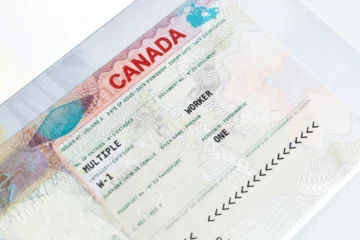Table of contents
Unemployment insurance, more commonly referred to as Employment Insurance (EI) in Canada, plays a crucial role in providing financial support to individuals who are temporarily out of work and actively seeking employment. In British Columbia (BC), as in other provinces, EI is administered by the federal government through Service Canada. This blog post explores how EI works in BC, the eligibility criteria, how to apply, and what benefits you can expect.
What is Employment Insurance?
Employment Insurance is a federal program designed to offer temporary financial assistance to unemployed workers in Canada. This program also extends to those who are unable to work due to specific circumstances, such as sickness, childbirth, or caring for a newborn or adopted child, or a seriously ill family member.

Eligibility Criteria for EI in British Columbia
To qualify for EI benefits in BC, applicants must meet several criteria:
- Employment Hours: You must have worked a certain number of insurable employment hours within the last 52 weeks or since your last claim. This requirement typically ranges from 420 to 700 hours, depending on the unemployment rate in your region.
- Job Separation: Your separation from your job must be through no fault of your own (e.g., layoffs, shortage of work, seasonal or mass terminations).
- Active Job Search: You must be actively looking for work and be able to prove it in your bi-weekly reports to Service Canada.
- Availability: You must be ready, willing, and capable of working each day.
Applying for EI Benefits
To apply for EI benefits in BC, follow these steps:
- Gather Documentation: Before applying, ensure you have all necessary documents, such as your Social Insurance Number (SIN), records of employment (ROEs) from employers over the last 52 weeks, personal identification, and banking information for direct deposits.
- Online Application: Complete the application online at the Service Canada website as soon as you cease working. Delaying application beyond four weeks after your last work day can result in loss of benefits.
- Wait for Approval: After submitting your application, you will typically receive an EI decision within 28 days. You must continue to submit bi-weekly reports during this period to show your ongoing eligibility.
Types of EI Benefits Available in BC
Employment Insurance encompasses several types of benefits, each catering to different needs:
- Regular Benefits: For those who have lost their jobs through no fault of their own and are actively seeking employment.
- Sickness Benefits: For those unable to work due to illness, injury, or quarantine.
- Maternity and Parental Benefits: For parents who are pregnant, have recently given birth, are adopting a child, or are caring for a newborn.
- Caregiving Benefits: For individuals taking care of a family member who is critically ill or injured.
Duration and Amount of EI Benefits
The duration and amount of EI benefits you can receive depend on your previous earnings and the regional unemployment rate. Generally, EI benefits can cover up to 55% of your earnings up to a maximum amount. The standard benefit period ranges from 14 to 45 weeks, depending on the insurable hours worked and the regional unemployment rate.
Challenges and Tips for Navigating EI
Navigating the EI system can be challenging. Here are some tips to ensure you receive your benefits smoothly:
- Ensure Accurate Application: Double-check your application and documents before submission to avoid any delays due to errors.
- Maintain Eligibility: Keep a log of your job search activities as you may be required to present this during audits or checks by Service Canada.
- Understand the System: Familiarize yourself with the EI benefits system, including what each type of benefit entails and how they specifically apply to your situation.

Employment Insurance is an essential safety net for those who find themselves out of work in British Columbia. Understanding how EI works, meeting the eligibility requirements, and following the correct application process are crucial steps in accessing the benefits you need during unemployment periods. Remember, EI is designed to be a temporary solution as you transition between jobs or face other life challenges. By taking the right steps, you can navigate this system effectively and focus on your return to the workforce.
Employment Insurance (EI) is a federal program in Canada that provides temporary financial assistance to individuals who are unemployed and actively looking for work. EI also offers special benefits to those who are sick, pregnant, caring for a newborn or adopted child, or caring for a family member who is seriously ill.
To be eligible for EI benefits, you must:
Have paid into the EI program through payroll deductions.
Have worked a minimum number of insurable hours in the last 52 weeks or since your last claim (this varies by region).
Be without employment and pay for at least seven consecutive days in the last 52 weeks.
Be actively looking for and be capable of working each day.
You can apply for EI benefits online through the Service Canada website or in person at a Service Canada office. You will need to provide your Social Insurance Number (SIN), records of employment (ROEs), and personal identification. It is recommended to apply as soon as you stop working to avoid delays in receiving benefits.
You will need:
Your Social Insurance Number (SIN).
Records of employment (ROEs) for all employers you worked for in the past 52 weeks.
Personal identification such as a driver’s license or passport.
Banking information for direct deposit of your EI payments.
EI benefits generally pay 55% of your average insurable weekly earnings, up to a maximum amount. The exact amount you receive depends on your earnings and the unemployment rate in your region.
The duration of EI benefits can vary from 14 to 45 weeks, depending on the insurable hours you have accumulated and the regional unemployment rate where you live.
If you were fired for misconduct, you might not be eligible for EI. However, if you were let go due to a lack of work or other reasons outside your control, you would likely be eligible. If you quit your job, you must prove that you had just cause to quit (such as harassment or unsafe working conditions) to be eligible for EI.
If your EI claim is denied, you have the right to request a reconsideration of the decision. This must be done within 30 days of receiving the decision letter. You can submit additional information and clarify any points that might help your case.
Yes, you must complete bi-weekly reports to Service Canada to show that you are still eligible for EI benefits. These reports include information about any money you earned, job offers, courses or training you took, and your availability for work.
You can contact Service Canada by phone at 1-800-206-7218 (select option “1” for EI inquiries), visit their website, or go to a local Service Canada office for in-person assistance.
These FAQs cover the basics of Employment Insurance in British Columbia, helping you understand how to access and maintain your EI benefits. For more detailed questions specific to your situation, contacting Service Canada directly is advisable.
Pax Law can help you!
Our lawyers and consultants are willing, ready, and able to assist you. Please visit our appointment booking page to make an appointment with one of our lawyers or consultants; alternatively, you can call our offices at +1-604-767-9529.


0 Comments